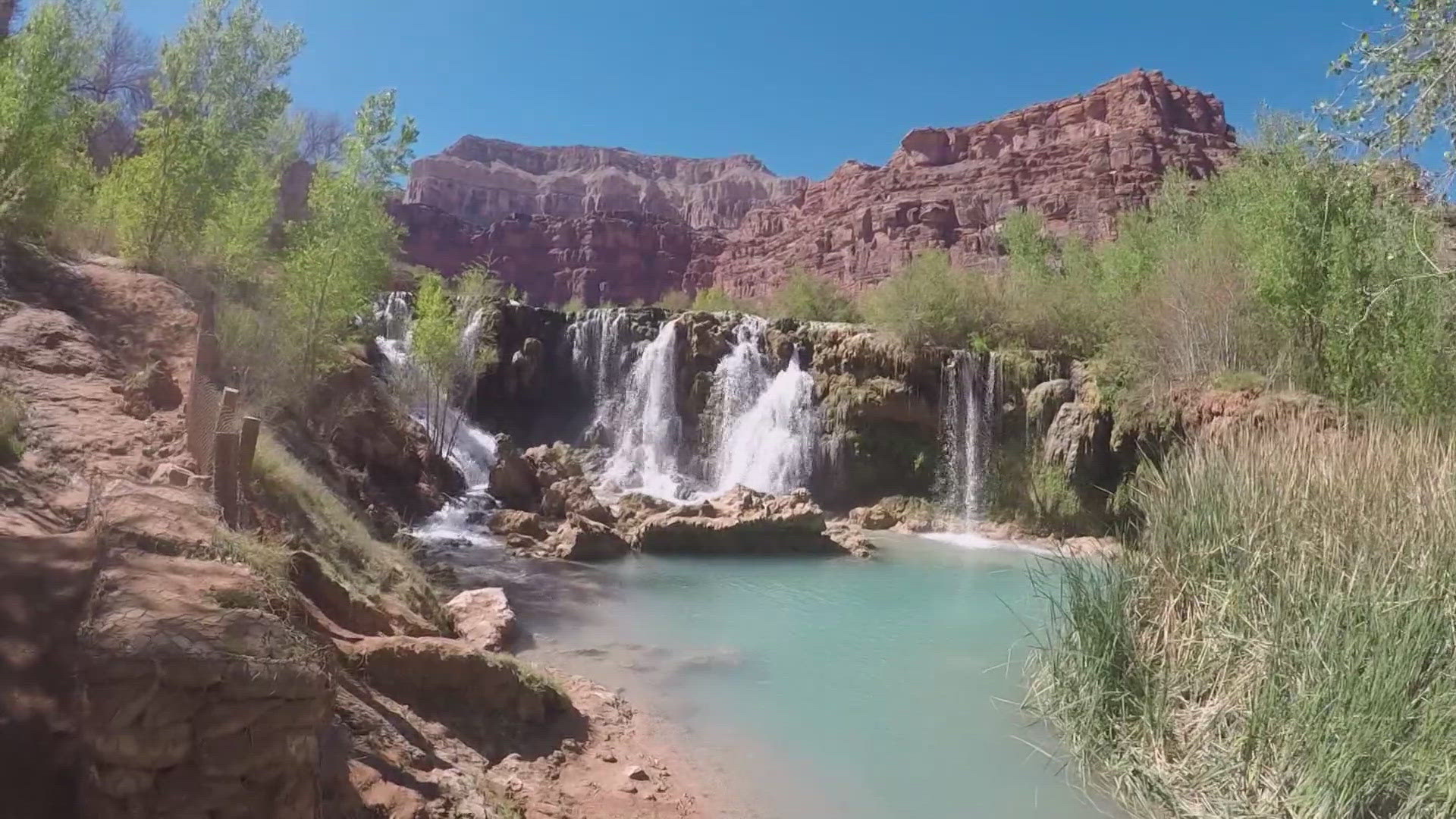SUPAI, Ariz. — When a group of hikers were caught in a flash flood that left one woman dead and triggered the evacuation of over 100 people, they were barely getting rained on.
On Thursday, Aug. 22, Havasu Creek near Supai Village was struck by a devastating flash flood. But that event didn't start in the immediate area. Radar images from that day showed that the storms responsible formed up to 10 miles away.
That day, Chenoa Nickerson was hiking in the creek with her husband when a flash flood struck and swept them away. Although her husband was rescued by a group of rafters, Nickerson went missing. She would be found dead three days later and 20 miles away.
Stories like these are common to the American Southwest, where the canyon-covered landscape is primed to channel water into intense, fast-moving floods.
In 2008, a severe flood in the area permanently changed the flow of the creek and left more than 450 hikers stranded. Last year, dozens of people were stranded in Havasupai Village by similar flooding.
"This is canyon country," explained NWS Flagstaff Meteorologist-in-Charge Brian Klimowski. "Water isn't absorbed very well at all when it falls, and when you get torrential rainfall, like in this event, it runs off very quickly and accumulates in these narrow canyons."
Many of these canyons are connected to a large drainage basin via miles of rivers and creeks. During monsoon storms, a massive amount of water is forced into smaller areas, rapidly increasing its depth and force.
Most of the water that caused last week's flooding fell not on the Supai area, but within 5 to 10 miles of it, Klimowski explained. Even if it started miles away, it didn't take long for the flood to hit.
Below: A map of the Havasu Canyon Watershed provided by the Grand Canyon National Park shows how steep many of the surrounding canyons and formations are.
"Within 30 minutes to an hour-and-a-half [it] was causing the destructive flooding that we saw," he said. The storms that caused the 2008 flood were 20 to 50 miles upstream and only took a few hours to hit the populated area.
Klimowski explained that flash floods move at roughly 6 to 8 mph. Although that doesn't seem like a lot on paper, water moving at that speed carries a lot of force. A person can be swept away by as few as 18 inches. A car will float away in just 20 inches.
For those looking to hike safely in flood-prone areas, Klimowski recommended prevention, preparation and knowing when it's time to leave.
"If you're in a narrow canyon and you hear thunder, you might not see where it is, but you know there are thunderstorms near," he said. "It's time to get out. Use your ears. Use your eyes. If you see the signs of storms building in the area, it's time to get out."
The National Weather Service maintains forecasts and early warnings for areas like the Grand Canyon National Park. They'll issue an alert when flooding is imminent or underway and often have warnings as early as the day before.
But if you are caught in a dangerous situation, Klimowski says it's important to know how to find safe locations. Look for wide, open areas that are well above the water level and avoid camping in dry streambeds.
More than 100 people had to be airlifted out of Havasu Canyon by the Arizona National Guard after the flooding. The trail to Havasu Canyon, the Havasupai Campground and the Havasu Falls areas are closed indefinitely, according to the Havasupai Tribal Council.
The Grand Canyon National Park says hikers in the area should be aware of some key points:
- Sudden and Intense: Flash floods can occur rapidly and unexpectedly, even if it isn’t raining where you are. Storms miles away can still lead to dangerous flooding in your area.
- Know the Terrain: Before heading out, study maps to identify potential escape routes. Be particularly cautious in slot canyons and areas prone to flooding, as these regions are beautiful but can be extremely dangerous during rainfall.
- Be Weather-Wise: Always be alert for weather forecasts and flash flood warnings, especially during the monsoon season from July to mid-September, when severe thunderstorms are more common.
- Avoid Risky Areas: Steer clear of streambeds, narrow canyons, and washes, particularly if there are flash flood warning signs. If water levels rise or you encounter flowing water, do not attempt to cross.
- Safety Actions: If you see or hear a flood coming, move to higher ground immediately. Don’t try to outrun a flood, and always face upstream when near creeks or drainages. Be prepared to warn others downstream if a flash flood occurs.
"Remember, flash floods are essentially 'more water than you want in less time than you have,' and they can be life-threatening. Preparation and awareness are crucial for anyone exploring these stunning but perilous landscapes," park officials said.
>> Download the 12News app for the latest local breaking news straight to your phone.
12News on YouTube
Catch up on the latest news and stories on our 12News YouTube playlist here.

